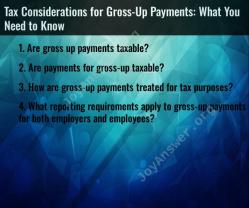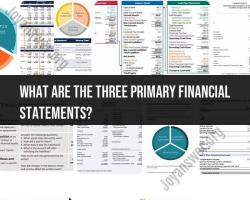Do banks actually loan money when making you a "loan"?
Yes, banks do actually loan money when they provide you with a "loan." When you apply for a loan, whether it's a personal loan, mortgage, auto loan, or any other type of loan, the bank or lending institution agrees to lend you a specific amount of money. Here's how the process typically works:
Loan Application: You apply for a loan with a bank or lender. This application includes information about your credit history, income, employment, and the purpose of the loan.
Credit Assessment: The bank evaluates your creditworthiness by reviewing your credit score and credit history. They also consider your income and debt-to-income ratio.
Loan Approval: If your application is approved, the bank agrees to lend you a specific amount of money. This amount is known as the principal.
Loan Agreement: You and the bank enter into a loan agreement that outlines the terms and conditions of the loan. This includes the interest rate, repayment schedule, loan term, and any fees associated with the loan.
Disbursement: Once the loan is approved, the bank disburses the loan funds. In the case of a mortgage, the funds are typically paid directly to the seller of the property. For other types of loans, the funds may be deposited into your bank account.
Repayment: You are responsible for repaying the loan according to the terms of the loan agreement. This typically involves making regular monthly payments that include both principal and interest. The interest is the cost of borrowing the money.
Interest: The interest you pay is the bank's profit for lending you the money. The interest rate is determined based on various factors, including your creditworthiness and prevailing market rates.
Loan Term: Loans have a set term or duration over which you must repay the money. For example, a mortgage might have a term of 30 years, while a personal loan might have a term of 3 years.
Collateral (for Secured Loans): Some loans, like mortgages and auto loans, are secured by collateral. If you fail to repay the loan, the bank can take possession of the collateral (e.g., your home or car) to recover the debt.
In summary, banks and lending institutions do provide actual money when they approve a loan. However, they charge interest on the borrowed amount as compensation for the risk and opportunity cost of lending that money. Borrowers are expected to repay both the principal (the original loan amount) and the interest according to the terms of the loan agreement.
How Banks Handle Loans: Understanding the Lending Process
When you apply for a loan from a bank, the bank will first assess your creditworthiness. This includes reviewing your credit score, credit history, income, debt-to-income ratio, and employment status. The bank will also consider the purpose of the loan and the amount of money you are requesting.
Pre-qualification
Before you apply for a loan, you may want to get pre-qualified. This is a process where the bank gives you an estimated interest rate and loan amount based on your credit profile and other factors. Pre-qualification can help you determine how much you can afford to borrow and increase your chances of getting approved for a loan.
Application process
Once you are ready to apply for a loan, you will need to fill out a loan application. The application will ask for information about your personal and financial situation, as well as the purpose of the loan. You may also need to provide documentation such as pay stubs, tax returns, and bank statements.
Loan review
After you submit your loan application, the bank will review it to determine whether or not to approve you. The bank will consider all of the factors mentioned above, as well as its own internal lending policies.
Loan approval
If your loan application is approved, the bank will send you a loan agreement. This agreement will outline the terms of the loan, including the interest rate, repayment schedule, and fees. You will need to sign the loan agreement and return it to the bank before the loan can be disbursed.
Loan disbursement
Once you have signed the loan agreement, the bank will disburse the loan funds to you. The funds may be deposited into your bank account or sent to the seller of the item you are purchasing with the loan.
The Mechanics of Bank Loans: From Application to Disbursement
Once you have submitted a loan application, the bank will typically follow these steps to review and process your loan:
- Credit check: The bank will order a copy of your credit report and score from one or more of the three major credit bureaus. This will help the bank assess your creditworthiness and risk of default.
- Income verification: The bank will verify your income by requesting pay stubs, tax returns, or other documentation. This will help the bank determine your ability to repay the loan.
- Debt-to-income ratio calculation: The bank will calculate your debt-to-income ratio by dividing your total monthly debt payments by your monthly income. This ratio helps the bank assess your ability to repay the loan without becoming overextended.
- Loan-to-value ratio calculation: If you are applying for a mortgage, the bank will calculate your loan-to-value ratio by dividing the amount of the loan by the appraised value of the home. This ratio helps the bank assess the risk of the loan.
- Loan underwriting: The bank will use all of the information collected to underwrite the loan. This process involves assessing the risk of the loan and determining whether or not to approve the loan.
- Loan approval: If the loan is approved, the bank will send you a loan agreement. This agreement will outline the terms of the loan, including the interest rate, repayment schedule, and fees.
- Loan disbursement: Once you have signed the loan agreement, the bank will disburse the loan funds to you. The funds may be deposited into your bank account or sent to the seller of the item you are purchasing with the loan.
Behind the Scenes of Bank Loans: What Happens When You Borrow
When you borrow money from a bank, you are essentially creating a debt obligation. This means that you are legally obligated to repay the loan, plus interest, over a period of time.
The bank will use the loan proceeds to fund its operations, such as making new loans, investing in securities, and covering its expenses. The bank will also earn interest on the loan, which is how it profits from lending money.
In addition to interest, the bank may also charge other fees associated with the loan, such as origination fees, prepayment penalties, and late fees. It is important to be aware of all of the fees associated with a loan before you apply.
Here are some other things to keep in mind about bank loans:
- Banks are not required to lend money to everyone who applies for a loan. The bank has the right to approve or deny any loan application at its discretion.
- Banks are also not required to offer the same interest rate or terms on a loan to all borrowers. The interest rate and terms of a loan will vary













